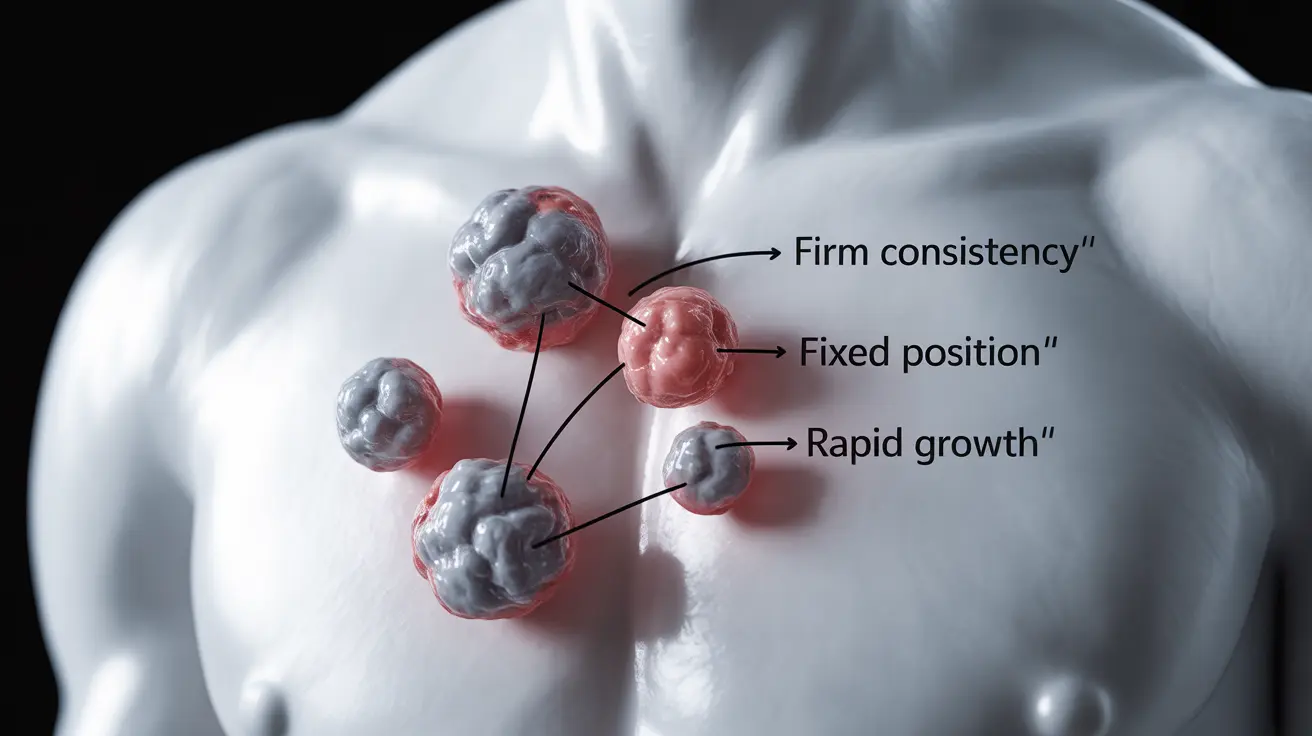When you discover a swollen lymph node, it's natural to feel concerned about whether it could be something serious. Malignant lymph node neoplasms are cancerous growths that develop in the lymph nodes, and understanding their characteristics, symptoms, and treatment options is crucial for early detection and proper medical care.
In this comprehensive guide, we'll explore how to distinguish between benign and malignant lymph node conditions, what to expect during diagnosis, and the various treatment approaches available. We'll also discuss when you should seek medical attention for swollen lymph nodes.
Key Characteristics of Malignant Lymph Node Neoplasms
Malignant lymph node neoplasms have several distinctive features that set them apart from benign swelling. These characteristics include:
- Firm or hard consistency
- Fixed or immovable position
- Rapid growth
- Persistent enlargement
- Absence of pain in many cases
- Multiple affected nodes in some instances
Understanding the Diagnosis Process
Diagnosing a malignant lymph node neoplasm requires a systematic approach involving multiple diagnostic tools and procedures:
Physical Examination
Your healthcare provider will carefully examine the affected lymph nodes, checking for size, consistency, and mobility. They will also look for other symptoms and review your medical history.
Imaging Studies
Several imaging techniques may be used to evaluate lymph node involvement:
- CT scans
- MRI
- PET scans
- Ultrasound imaging
Biopsy Procedures
A definitive diagnosis typically requires a biopsy, which may include:
- Fine-needle aspiration (FNA)
- Core needle biopsy
- Excisional biopsy
Treatment Approaches
Treatment for malignant lymph node neoplasms varies depending on the underlying cause and extent of the disease. Common treatment options include:
Surgical Intervention
Surgery may be necessary to remove affected lymph nodes and surrounding tissue. The extent of surgery depends on the cancer type and stage.
Radiation Therapy
Targeted radiation can help destroy cancer cells and shrink tumors in affected lymph nodes.
Systemic Treatments
Various systemic treatments may be recommended:
- Chemotherapy
- Immunotherapy
- Targeted therapy
- Hormone therapy (in specific cases)
Warning Signs and When to Seek Medical Care
It's important to recognize when lymph node changes warrant medical attention. Seek immediate medical care if you notice:
- Lymph nodes larger than 1 inch in diameter
- Progressive enlargement over several weeks
- Hard or fixed nodes
- Unexplained weight loss
- Night sweats
- Persistent fever
- Fatigue or weakness
Frequently Asked Questions
What are the main symptoms that help distinguish benign from malignant lymph node neoplasms?
Malignant lymph node neoplasms typically present as firm or hard masses that are fixed in position and don't move easily. They often grow rapidly and persist for weeks without improvement. Unlike benign nodes, they may be painless and accompanied by systemic symptoms like unexplained weight loss and night sweats.
How is malignant lymph node neoplasm diagnosed, and what kind of tests should I expect?
Diagnosis typically involves a physical examination, imaging studies (CT, MRI, PET scans), and a biopsy. The biopsy may be performed using fine-needle aspiration, core needle biopsy, or excisional biopsy techniques. Blood tests and additional screening may also be necessary to determine the extent of disease.
What are the most effective treatments for malignant lymph node neoplasms, and what options are available?
Treatment options include surgery to remove affected nodes, radiation therapy, chemotherapy, immunotherapy, and targeted therapy. The specific treatment plan depends on factors such as the type of cancer, stage, and overall health status of the patient.
Can you have a malignant lymph node neoplasm without having lymphoma, and what does it mean if cancer is found in a lymph node?
Yes, malignant lymph node neoplasms can occur due to metastasis from other primary cancers, not just lymphoma. Finding cancer in a lymph node often indicates that cancer has spread from another part of the body through the lymphatic system.
When should I see a doctor for a swollen lymph node, and what are the warning signs that it might be cancer?
Consult a doctor if you have lymph nodes that are larger than 1 inch, continue to grow, feel hard or fixed in place, or persist for more than two weeks. Additional warning signs include unexplained weight loss, night sweats, persistent fever, or fatigue. These symptoms, especially in combination, warrant prompt medical evaluation.




